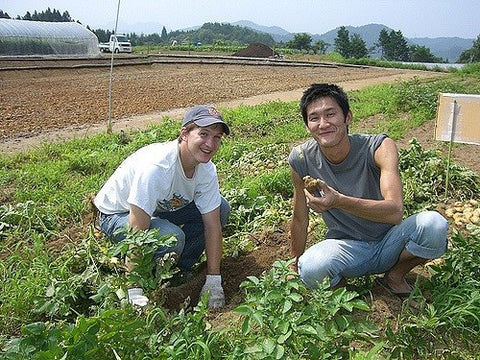So You're Becoming a Farmer—5 Things to Consider
What is it to be a farmer? Depending on where you live, what you grow, and the communities you impact, being a farmer means so many things to different walks of life. Agriculture communities have been operating for thousands of years. Farming in itself is the perfect depiction of modern society. In this labor that works in communion with the land, we see divisions of labor, planning, cultivation, and delayed gratification. This is remarkably the structure that has become the backbone of civilization. And think, this order of functioning has only existed for about 10,000 years.
Ancient Egyptians were some of the first large-scale farmers we know of, using basin irrigation to cultivate crops to feed a rapidly expanding civilization. Thousands of years later, we’d see similar and more advanced practices in the ancient Greek civilization that incorporated the same principle on a more advanced level, with almost 80% of its population involved in the activity of agriculture. It’s been these practices upon which all major modern civilizations have been built since.

Nowadays, in the United States, our means of starting a farm look slightly different than the Greeks and Egyptians. And while we still use an astonishing amount of their technologies, farming ranges from micro-farms to mega-crops. The machinery, engineering, and technological advancement are mind-blowing. And no matter how big or small your farm is, the federal government is in support and offers incentives and support to see that you thrive in your farming endeavor.
So how do you start?
There are many variables to consider, but we’ve narrowed the scope to a few key factors.
Where to farm?
This question has been poised for anyone seeking the pursuit of agriculture, from early settlers who depended upon fertile land to build families and communities to those who seek farming as a means of enterprise or have a hobby and lifestyle alternative—having fertile land or making somewhat inhospitable land nutrient-rich and formidable. With modern advancements in agriculture, more climates and landscapes are capable of supporting a farm than ever before. Now there are farmers at every end of the globe, and there will likely be farms in space someday soon.
What to farm?
Knowing what to grow is complex and depends on a variety of factors. If your farm is a potential enterprise, what to grow depends on what the market needs or, like many corn farmers, what guarantees and subsidies the USDA will provide to ensure you stand to make a return on your investment.
For future farmers interested in farming to feed themselves, their families, and communities, like so many homesteaders we know, choosing crops that allow for diversity and access to a life of self-sufficiency.
For others interested in farming as an enterprise, as a hobby, or for impacting environmental reasons, there is an endless array of plants and organisms that can be the fruits of one's labor. It’s not just about what we eat or livestock, if that’s your thing.
How to learn
This is the trickiest part of this process that might make everything else seem somewhat trivial.
While the action is often the best teacher, and we learn and grow through mistakes, giving us wisdom and insight no textbook can teach, there are ways of learning that are less risky than others. In this sense struggling well might be the best approach, and getting one’s roots solidly planted (pun intended) before embarking full-scale on a life of farming might be the way to go. If you’re not passed down the family farm and spent every morning following an older, more experienced caretaker into the field, then working for the farmer or rancher you want to become might be the best approach.
The paths to learning the trade have many routes. One favorite among those looking to travel is WWOOFing, where young farmers get to learn organic farming in foreign countries. Many do this as a way to travel the world and learn about cultures outside of their own, but it can be a terrific avenue to learning to farm and bringing those practices back to the local community.

There’s also the path of education. Living near the hub of California’s central valley, I became acquainted with many farmers who had gotten their starts as students at the University of California, Davis. Following a path like this can allow for grants and financial assistance that doesn’t exist outside the academic arena.
Is there help?
For better or worse, the US government would love to lend a helping hand. One way or another, the USDA will likely be involved in your farming journey—especially if you’re raising livestock for slaughter and sale. But there are many perks to working with a federal organization with as many resources as this. According to farmers.gov, USDA considers anyone who has operated a farm or ranch for less than ten years to be a beginning farmer or rancher. USDA can help you get started or grow your operation through various programs and services, from farm loans to crop insurance and conservation programs to disaster assistance.
So before you embark on this lifelong journey, explore some of the ways you can make the dream of living off the land and providing for others a reality. And before you think you’re on your own, who knows, there might be some unexpected help along the way.












